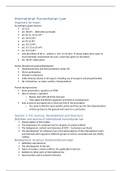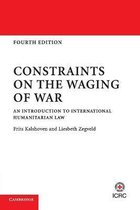Samenvatting
Summary International Humanitarian Law Notes
- Instelling
- Universiteit Leiden (UL)
Full complete lecture notes including additional notes on the powerpoints of the class Basics of International Humanitarian Law taught by Prof. Dr. H. Fischer, an elective of the law faculty of Leiden University and also part of the minor Law, Culture and Development.
[Meer zien]





